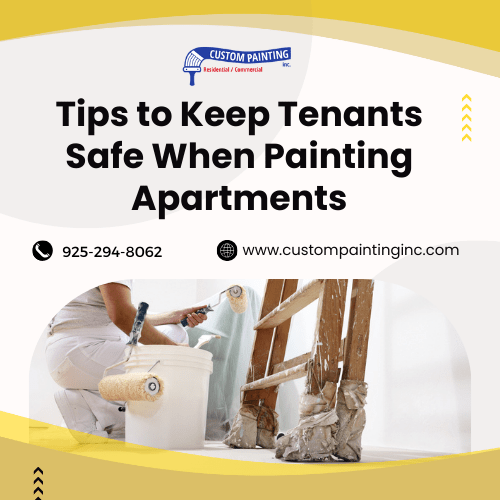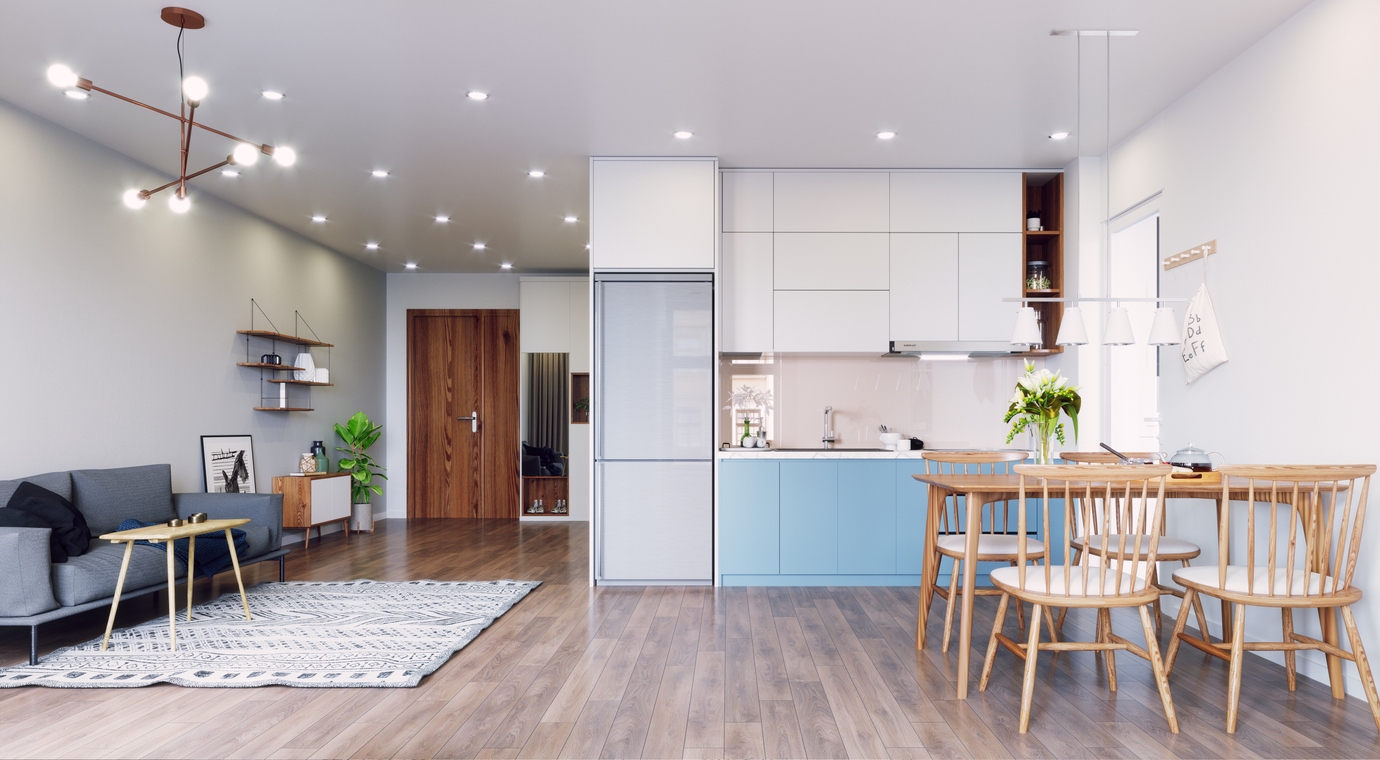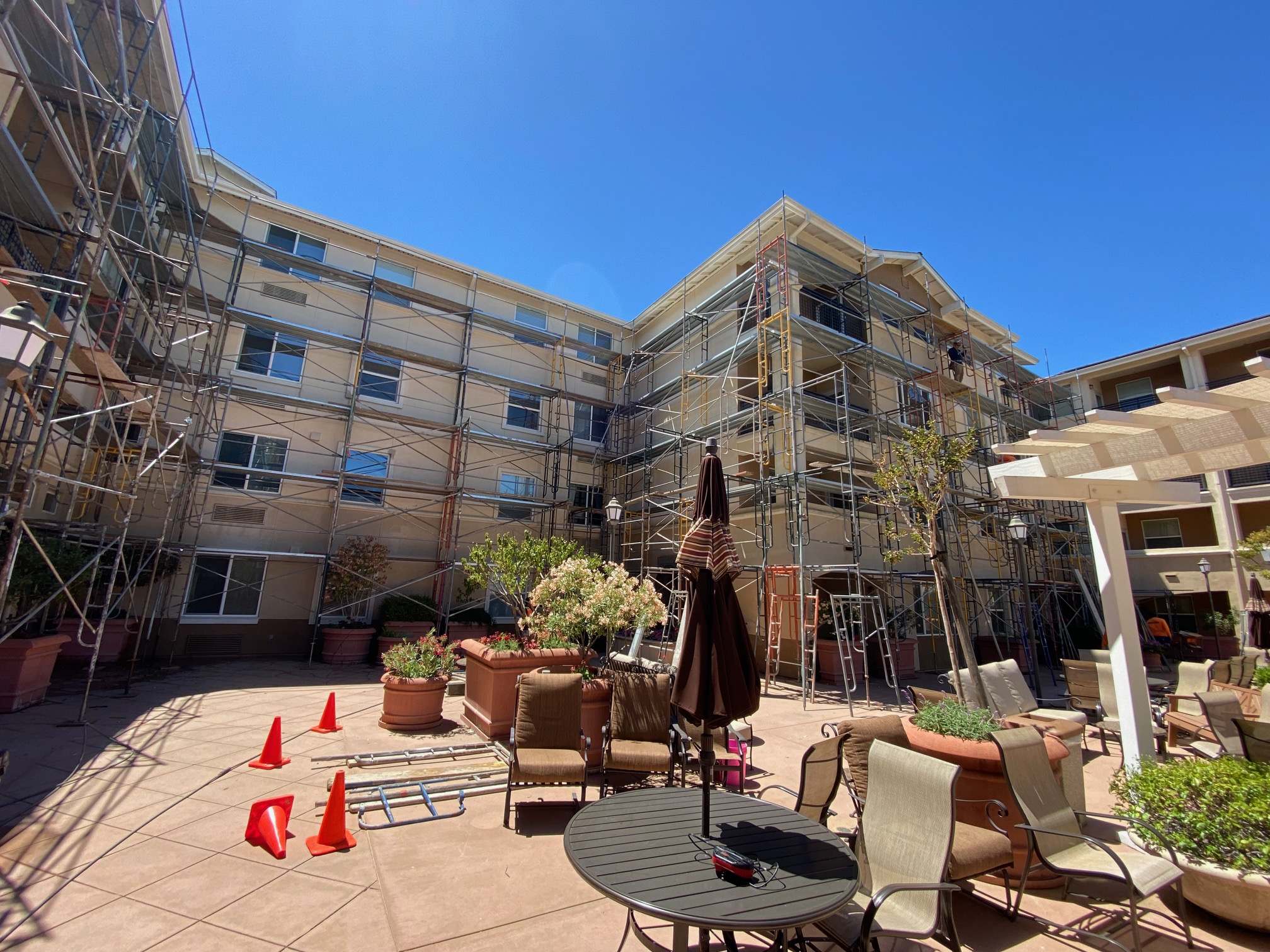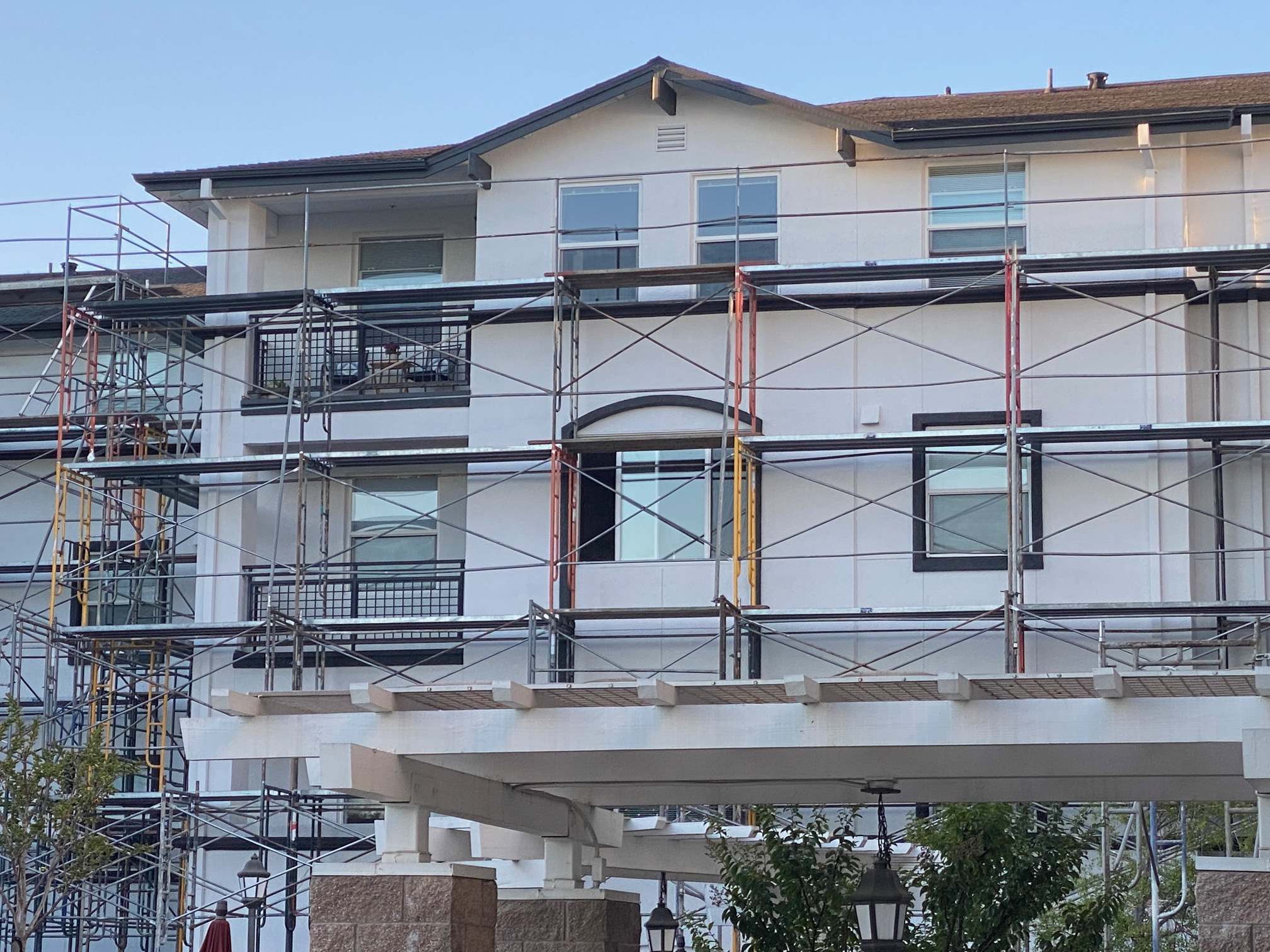Ensuring tenant safety is crucial during apartment painting projects to prevent health risks from fumes, dust, and hazardous materials. Proper precautions minimize disruptions and promote well-being. Painting in occupied multi-unit buildings presents challenges like coordinating schedules, minimizing noise, controlling odors, and ensuring access to shared areas while maintaining safety and comfort.
Professional painters prioritize tenant health by using low-VOC paints, managing ventilation, ensuring proper safety measures, and minimizing inconvenience, thus maintaining a positive living environment.
Using low-VOC and non-toxic paints
VOCs, or volatile organic compounds, evaporate into the air during paint drying. These chemicals then release fumes that can cause respiratory issues, headaches, and long-term health risks, particularly for sensitive individuals like children and those with allergies.
Benefits of low-VOC paints: Low-VOC or non-toxic paints produce fewer harmful fumes, thus improving indoor air quality and reducing exposure to toxins. This makes them ideal for apartments with limited ventilation.
Eco-friendly paint options: These paints not only protect health but also support sustainability by using renewable resources, reducing environmental impact, and contributing to cleaner, safer living environments.
Proper ventilation during the painting process
Proper ventilation while painting apartment buildings is essential for tenant safety.
- Maximizing airflow: Open windows, use fans, and employ air purifiers to help disperse fumes and circulate fresh air. Doing so reduces the buildup of harmful chemicals in paint.
- Temporary ventilation solutions: In areas with limited external airflow, use portable ventilation systems like exhaust fans or specialized venting equipment to create airflow and prevent fumes from accumulating.
- Avoid closed-off spaces: Never paint in confined, unventilated areas, as this can lead to the buildup of toxic fumes, increasing the risk of respiratory issues and potential long-term health effects.
Clear communication with tenants
Clear communication with tenants is essential during apartment painting to minimize disruption, ensure safety, and maintain positive relationships. Here’s how to approach this process effectively:
- Informing tenants in advance: Notify tenants about painting schedules, timelines, and potential disruptions ahead of time. Early communication helps tenants plan accordingly and reduces inconvenience, ensuring a smoother process for tenants and property managers.
- Notifying of hazardous areas: Use proper signage and barriers to mark areas undergoing painting or drying. This prevents accidental access to hazardous spaces, keeps tenants safe, and avoids damage to fresh paintwork. Additional projects may have to be undertaken such as concrete ceiling repair, wood rot repair, and need to be taken into consideration.
- Providing safety guidelines: Sharing safety practices is essential, including advising tenants to stay clear of freshly painted areas, avoid touching wet surfaces, and ventilate their apartments properly to minimize exposure to fumes. It ensures tenants are informed and safe throughout the process.
Scheduling painting around tenant availability
Managing painting schedules in apartment buildings can be a balancing act, requiring strategic timing to minimize disruption for tenants while maintaining efficiency. Here’s how to best approach scheduling painting around tenant availability:
- Painting during vacancies: The ideal time to paint is between tenant move-outs, as it completely avoids disruptions. It allows for thorough work without worrying about tenant schedules or potential exposure to fumes, ensuring the space is fresh for new tenants.
- Off-hours painting: Scheduling painting during low-occupancy times, such as daytime hours when tenants are at work, minimizes inconvenience. Working during these hours allows painters to access common areas or individual units without disturbing tenants’ daily routines.
- Coordinating with tenants: Open communication with tenants allows the painters to create a flexible schedule. Providing advance notice, offering alternative painting times, and considering tenant preferences (like weekends or evenings) can help minimize disturbances while maintaining good tenant relations.
Containing the painting area
When painting apartments, especially in spaces where tenants are present, take measures to protect the physical environment and the tenants’ health and safety. This step involves carefully containing the painting area, preventing exposure to paint fumes, and ensuring tenants do not accidentally enter areas where work is being done. Here’s how to manage this effectively:
- Temporary barriers and plastic sheeting: Drop cloths, plastic sheeting, and temporary barriers are essential to protect adjacent spaces from paint splatters and fumes. Covering floors and furniture and hanging plastic sheeting in doorways enables you to prevent paint particles from spreading and protect surfaces. It also helps confine fumes to the painting area, reducing exposure in other building areas.
- Isolating high-traffic areas: Sealing off high-traffic areas, such as hallways or entryways, with plastic sheets or temporary walls is crucial to minimize tenant exposure to paint fumes. It ensures that frequently used spaces remain clean and safe for use while the painting area stays contained.
- Limiting access: Using tape and clear signage to mark restricted areas around wet paint zones effectively keeps tenants from accidentally entering dangerous spaces. This clear visual cue can help prevent unintentional contact with wet paint or hazardous materials.
Safe handling of paint materials and tools
When painting apartments in Antioch, CA, ensuring safety with materials and tools is essential for the painting crew and tenants. Here’s a breakdown of crucial safety practices:
- Proper storage of materials: Paints, solvents, and tools should be securely stored in designated areas, away from common areas and high-traffic spaces, to prevent tenant exposure to harmful fumes, spills, or accidents. Proper labeling and ventilation in storage areas are also essential for safety.
- Disposing of hazardous materials: Leftover paints, solvents, and cleaning agents must be disposed of according to local hazardous waste disposal guidelines to protect tenants from toxic chemicals and environmental contamination. Never pour solvents down drains or discard them in regular trash.
- Using safe, non-toxic cleaning products: Choose eco-friendly and non-toxic cleaning solutions for post-painting cleanup to ensure indoor air quality remains healthy for tenants, minimize chemical exposure, and reduce environmental impact.
Noise and disruption control
For apartments in Lafayette, CA, particularly in multi-unit or occupied buildings, minimizing noise and disruption is critical to maintaining a positive relationship with tenants during the painting project. Here are the strategies to handle these aspects effectively:
- Minimizing noise: Painters can achieve this by using quieter tools (such as electric sanders with noise-reduction features), working during agreed-upon hours, and using sound-dampening materials like rugs or blankets around work areas.
- Clear communication about noise is key: Inform tenants in advance about the project timeline, specifically when noisy tasks like sanding or scraping will occur. Offer strategies to reduce disruption, such as temporary tenant relocation during loud phases, scheduling work when tenants are away, or focusing on less intrusive tasks during quieter times.
Quick drying solutions to reduce disruptions
- Choosing quick-dry paints: Opting for fast-drying or low-odor paint formulations significantly minimizes disruptions for tenants. These paints dry within a few hours, allowing faster re-occupancy and reducing the time tenants are exposed to wet surfaces or fumes. Low-VOC or zero-VOC paints are beneficial as they emit fewer harmful chemicals, improving air quality during and after painting.
- Post-painting ventilation: Proper ventilation after painting ensures that any lingering fumes dissipate more quickly. Using fans or opening windows allows fresh air to circulate, speeding up the drying process and creating a safer environment for tenants.
- Air purification: Air purifiers equipped with HEPA filters can help remove paint odors and airborne chemicals from the space after painting. This extra step enhances air quality, reducing the impact of any residual fumes and providing a more comfortable environment for tenants post-renovation.
Ensuring safety in shared places
Ensuring safety in shared spaces while painting apartments in Pleasant Hill is crucial, especially in areas like hallways, lobbies, stairwells, and elevators, where tenants frequently pass through.
- Hallways, lobbies, and common areas: Use low-VOC or odorless paints to minimize fumes and ensure proper ventilation. Block off areas with physical barriers to prevent contact with wet paint.
- Stairwells and elevators: Schedule painting during off-peak hours or provide alternative routes for tenants. Use quick-drying paints to reduce downtime in these high-use areas.
- Signage and safety warnings: Post clear signs indicating wet paint, restricted areas, and potential hazards. Use brightly colored, easily visible notices at entrances to affected spaces.
Post-painting inspections and cleanup
Post-painting inspections and cleanup for apartments involve three key steps:
- Ensuring the area is safe: Conduct a final inspection to verify that all paint is fully dry, fumes have adequate ventilation, and the environment is safe for tenants to re-enter.
- Thorough cleanup: Clean up all painting materials, remove debris, and restore the space to its original condition. This step prevents potential accidents and ensures tenant comfort.
- Addressing tenant concerns: Be prepared to handle any tenant questions or concerns about safety, cleanliness, or lingering fumes. Clear communication helps reassure tenants about the process.
Conclusion
Using low-VOC and non-toxic paints, proper ventilation, clear and effective communication, and safe work practices are essential to ensure tenant safety during apartment painting projects.
Ensure the safety and quality of your apartment’s paint job by contacting Custom Painting, Inc. today! Our team of experts will deliver a flawless finish, protect your space from harmful fumes, minimize noise and disruption during the paint project, and use durable paints that last. Make your abode look its best—call us at 925-686-0903 or message us on our contact page for a free quote.





